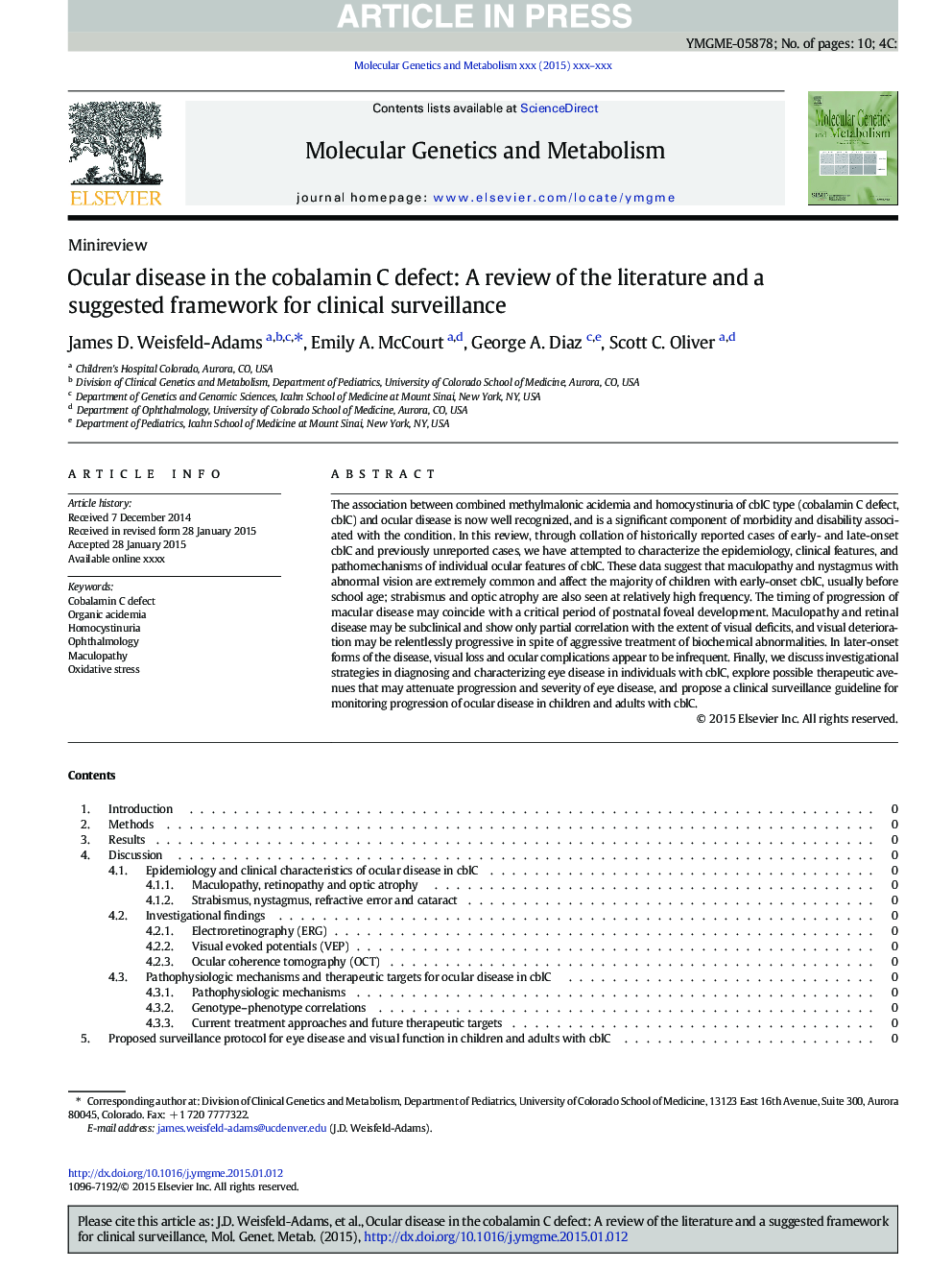| Article ID | Journal | Published Year | Pages | File Type |
|---|---|---|---|---|
| 10833050 | Molecular Genetics and Metabolism | 2015 | 10 Pages |
Abstract
The association between combined methylmalonic acidemia and homocystinuria of cblC type (cobalamin C defect, cblC) and ocular disease is now well recognized, and is a significant component of morbidity and disability associated with the condition. In this review, through collation of historically reported cases of early- and late-onset cblC and previously unreported cases, we have attempted to characterize the epidemiology, clinical features, and pathomechanisms of individual ocular features of cblC. These data suggest that maculopathy and nystagmus with abnormal vision are extremely common and affect the majority of children with early-onset cblC, usually before school age; strabismus and optic atrophy are also seen at relatively high frequency. The timing of progression of macular disease may coincide with a critical period of postnatal foveal development. Maculopathy and retinal disease may be subclinical and show only partial correlation with the extent of visual deficits, and visual deterioration may be relentlessly progressive in spite of aggressive treatment of biochemical abnormalities. In later-onset forms of the disease, visual loss and ocular complications appear to be infrequent. Finally, we discuss investigational strategies in diagnosing and characterizing eye disease in individuals with cblC, explore possible therapeutic avenues that may attenuate progression and severity of eye disease, and propose a clinical surveillance guideline for monitoring progression of ocular disease in children and adults with cblC.
Related Topics
Life Sciences
Biochemistry, Genetics and Molecular Biology
Biochemistry
Authors
James D. Weisfeld-Adams, Emily A. McCourt, George A. Diaz, Scott C. Oliver,
